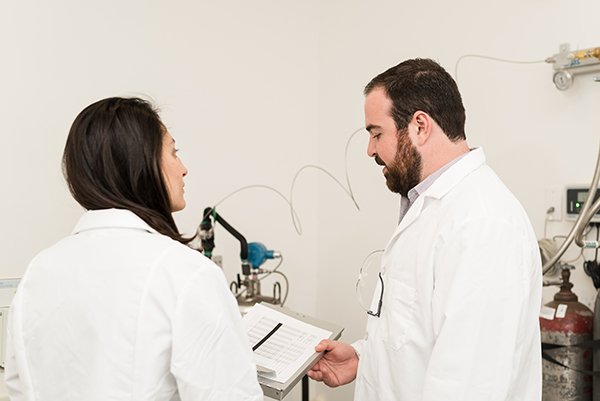Extracts helped evolve the cannabis industry, but not all extracts are created equal. Extraction methods matter when producing high-quality cannabis and hemp products.
Cannabis consumption used to be a simple proposition. Smoking a joint or bowl were the main options, and maybe a friend knew how to make edibles. As the culture and industry around cannabis matures, products ranging from concentrates, vapes, beverages, sublinguals, and transdermals have become wildly popular.
EXTRACTIONS 101
Extraction is required when any natural product like tea, coffee, hops, or cannabis is converted into a product. The goal of any extraction is to pull out the compounds of interest (caffeine and chlorogenic acid in coffee, cannabinoids, and terpenes in cannabis) while leaving behind inactive plant matter. Over time the goal of cannabis extractions has shifted dramatically. Initially, the goal was to achieve high throughput. High yield extractions focused solely on delivering the highest THC content possible. As more research has been presented and the consumer has become more informed there has been a shift toward full-spectrum extracts.
The importance of full-spectrum extracts is that they provide both the full efficacy and flavor of the original cannabis strain from which they were created. Full-spectrum has unfortunately been misapplied to any extract containing both cannabinoids and terpenes. However, a genuine full-spectrum extract should provide cannabinoids and terpenes inexact nature identical ratios existing in the original cannabis cultivar. This can be proven through analytical testing of both the starting cannabis flower and finished extract.

VARIOUS EXTRACTION METHODOLOGIES
This shift only adds to the confusion around what extraction technologies are the best for different product applications. While the most common question around cannabis extraction surrounds the best way to extract, the truth is that each method has its own set of pros and cons. The most important consideration is to pair an extraction technique with the goals of the extraction and capabilities of the operator.
Ethanol Extractions
If the goal, for example, is to simplify an extraction as much as possible, process high volume bulk biomass, and focus solely on producing a high THC extract, ethanol extraction paired with distillation may be an ideal solution. Ethanol is a relatively common extraction solvent and as such commercial solutions are readily available. While still flammable, ethanol is a very safe and food grade solvent which is readily distilled away. Lastly, it is an efficient solvent allowing for large scale rapid extractions.
Butane Extractions
On the other hand, if the goal is to preserve some of the terpenes from the original cannabis raw material, then butane extraction may be a better option. Butane extracts cannabis rapidly and delivers much of the cannabinoids and terpenes into the extract. Unfortunately, butane extraction systems tend to be smaller scale, and butane is a considerable explosion hazard meaning infrastructure costs may be high to create a safe production space.
For smaller, boutique-type concentrate production butane continues to be quite popular as it is simple to produce flavorful and potent extracts. While many would refer to these types of concentrates, sauces, waxes, etc. as full-spectrum, they don’t quite fit the bill. Butane does not extract all the compounds from cannabis equally, causing a shift in the ratios of the natural compounds occurs. Additionally, butane must be removed from the extracts for safe consumption. This removal process involves heating under a vacuum which results in a loss of terpenes in addition to the butane solvent.
CO2 Extractions
Creating true nature-identical, full-spectrum extracts to produce the highest quality products, Supercritical Fluid CO2 Extraction (SFE) has emerged as the technology of choice. What it provides in terms of extraction quality it trades off in complexity. This complexity and quality stem from the fact that unlike butane and ethanol, Supercritical Fluid CO2 is tunable based on temperature and pressure, which means the experienced extractor can tailor each extraction to the specific strain of cannabis being extracted.
Conversely, this also means an inexperienced extractor can very easily over or under-extract their cannabis resulting in low quality or low yield extracts. This challenge gave SFE a bad name in the early days of recreational cannabis legalization. Now, with new processes developed and optimized using engineering, chemistry, and analytical expertise, SFE can produce extracts which truly mirror the original raw material in both cannabinoid and terpene ratios. Additionally, because CO2 is safe, green, and a gas a room temperature, further heating is not required to make the product safe for consumption. These high-quality, nature identical extracts avoid any potential degradation, delivering the full cannabis experience into any product type including concentrates, vapes, beverages, sublinguals, and transdermals.
Understanding the goals of the cannabis extract being produced as well as understanding the knowledge required to operate these various extractions are critical to choosing an ideal process. Additionally, just as the goals of extraction have shifted over the last five years, they will continue to change over the next decade or more, meaning it is critical to continue to investigate new extraction technologies to stay at the forefront of a quickly shifting industry.

